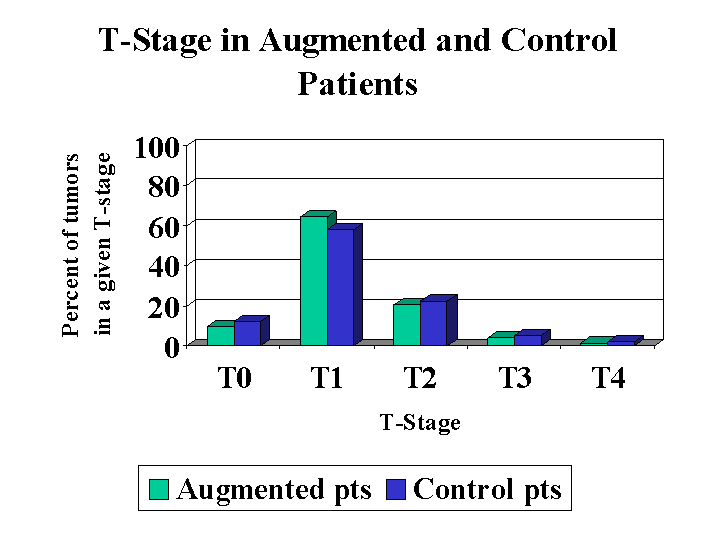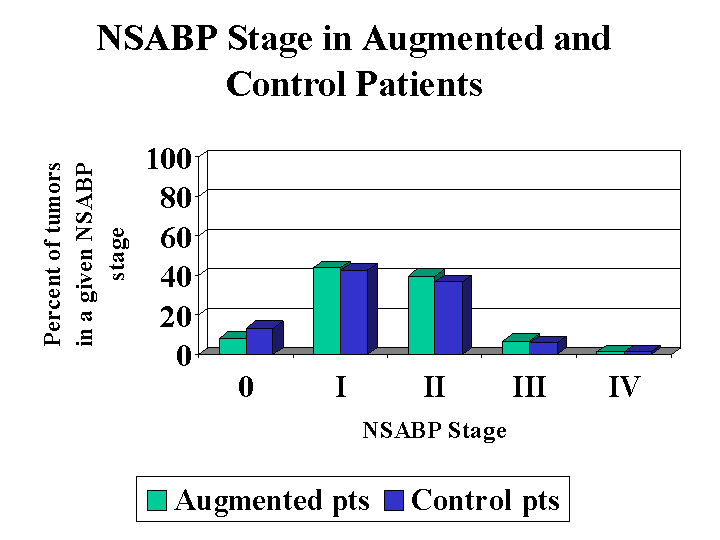Monday, October 27, 2003
3790
Breast Cancer in Patients with Prior Augmentation: Presentation, Stage, and Lymphatic Mapping
Objective:† †††† To determine if breast cancer patients who had prior breast augmentation presented at a more advanced stage than non-augmented breast cancer patients.† To determine the mode of presentation and effectiveness of lymphatic mapping and sentinel lymph node biopsy in this same group of patients.
Methods:††††††† 4,198 breast cancer patients were reviewed from 1987 to 2002.† Patients who had augmentation prior to their diagnosis of breast cancer were compared to a control group of non-augmented breast cancer patients.† Wilcoxon Rank Sum Test was used to compare tumor size, node positivity and stage.† The patientís age at presentation was also compared by the two-sided pooled t test.
Results:††††††††† 76 previously augmented patients were identified with 78 breast cancers. 70% (48/69) were initially detected by palpation, while 30% (21/69) were initially identified mammographically.† 53% (41) underwent mastectomy and 47% (37) underwent a lumpectomy. This compares with a 63.4% (2652/4186) breast conservation rate in the non-augmented population during the same time period.†
The two groups did not differ in regards to (T) size (p = .77) nodal (N) positivity (p = .32) or stage (p = .34).† The mean time between implant placement and a diagnosis of breast cancer was 14 years.† The average age of the augmented patients at breast cancer diagnosis was 49.5 years ( standard deviation9.0 years) versus 57.1years (standard deviation 13.5 years) for the non-augmented patients (p<0.0001).† 49 of the patients underwent lymphatic mapping with a 100% success rate in identifying the sentinel lymph node.† There have been no clinically detected axillary recurrences in the patients who had a negative SLN biopsy. Conclusion:†††† Breast cancer patients who have undergone previous augmentation are more likely to present with a palpable mass. This initial mode of detection does not appear to translate into a larger tumor size or worse prognosis.† Breast conservation and lymphatic mapping can be performed successfully in previously augmented patients.
†
†
†
†
†
†
†
†
†
†

†

†
View Synopsis (.doc format, 90.0 kb)
See more of Breast (Cosmetic and Reconstructive)
Back to Plastic Surgery 2003 Complete Scientific Program
Back to Plastic Surgery 2003 Meeting home
